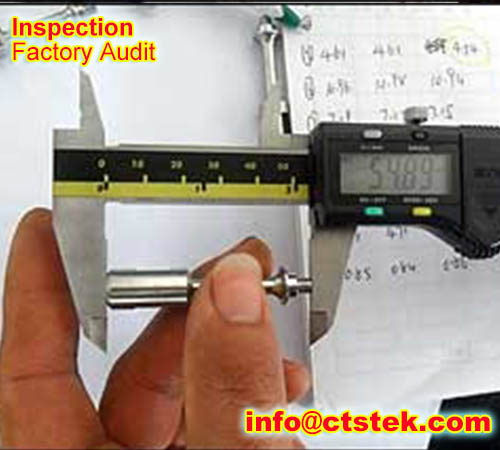Pre-shipment inspection, (AKA preshipment inspection) or PSI services, is a part of supply chain management and an important quality control method for checking the quality of goods. It mainly means a quality inspection process performed at a supplier’s or a factory’s premises by either your QC department or an independent third party quality control inspection agency.

Pre-shipment inspection can diminish risks inherent to Internet commerce like poor quality, phishing and fraud. A Pre-Shipment Inspection is a statistical and systematic inspection of units selected at random from all batches of your order, sample sizes are according to an international accepted standard: AQL, conducted when your production is completed at a certain percentage.
It’s a very common QC check for the consumer product industry in particular. It helps buyers, importers, traders, wholesalers, and retailers safeguard the quality of goods up to a certain quality level before the finished products are shipped. Such QC inspection can help avoid any nasty surprises. Through preshipment inspection, you can also know your goods are in proceeding order long before the delivery — quite useful if your suppliers are too far away.
It is your final opportunity to take corrective action before your production is finished and packed; making it an effective tool to safeguard your product against costly import risks.
You might have heard this type of inspection check called a final random inspection (FRI) or outgoing inspection (OQC). In reality, they are all the same thing; PSI inspection ensures that production complies with specifications of the buyer and/or the terms of a purchase order or letter of credit. A Final Random Inspection (FRI), checks finished products when at least 80% of an order has been produced and export-packed. Samples are selected at random, according to certain standards and procedures by the on-site inspectors.
The Advantages of Pre-Shipment Inspections:
There are lots of benefits to a PSI inspection, like you can find the problems earlier, fix any quality problems on-site, avoid quality arguments, make sure the quality of your goods are ok before final payment etc.
For example: the pre-shipment QC inspection procedure will save you a fair bit of time and money. Once the goods are in the country of destination, correcting faults becomes costly and requires additional shipping and time delays. By identifying any defects and errors in the batch before shipping, it makes things easier for suppliers to rectify any issue there and then.
Pre-Shipment Inspection Standards
Whether you use your own QC staff or a 3rd-party inspection company, commonly there is an international standard for sampling procedures and acceptance criteria that most QC inspectors will adopt.
ACCEPTABLE QUALITY LIMIT (AQL)
This AQL Table ANSI/ASQ Z1.4-2003 (Equivalent to ISO 2859-1 or MIL-STD-105E) is widely used for consumer goods Pre-Shipment Inspections throughout the world. It is a model that uses statistical number crunching to define the highest acceptable number of defects in the batch (i.e. how many defects can be allowed), beyond the number, it should be rejected.
The AQL chart is mostly the same for all industries, so it always provides a statistically balanced, unbiased guideline. You can further tailor it to your needs based on your own quality expectations.
RANDOM SAMPLING PLANS
Because the time and cost. In final quality inspection, the QC Inspectors can’t and won’t check every product. Instead, they’ll use sampling plans to determine how many samples they need to pick randomly to get a statistical overview of the quality level of the whole shipment.
The general inspection level II is the most common, and a default one. The general inspection level III is the most extensive check and samples a larger portion of the shipment compared to a general inspection Level I inspect at the lower end of the scale. Choosing your own AQL general inspection level will also depend on the quality risk you are facing and the type of products to be checked. For general consumer goods, General inspection level II is recommended, while automotive or medical products should be inspected at the general inspection level III.
DEFECT CLASSIFICATION
Depending on the needs of the buyer, preshipment inspection sampling can be used to verify different defects of the quality. One of the most commonly used within the consumer goods industry is to classify the visual workmanship defects as follows: critical, major or minor and define an acceptance quality limit (accordingly to AQL chart) for each one of them.
Our Preshipment inspection services include below:
- Initial Production Check
- During Production Check or During Production Inspection (Dupro)
- Final Random Inspection
- Container Loading Supervision
- Production Monitoring
- Random Product Sampling
- Factory Audit and Social Audit